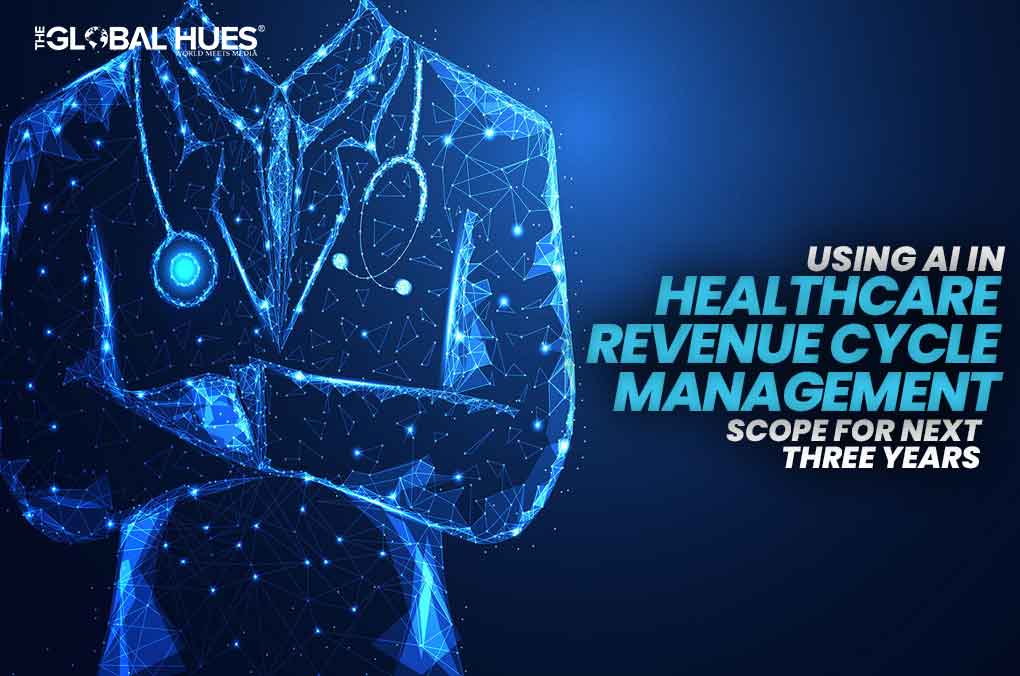In the constantly changing world of healthcare today, it is important for healthcare organizations to manage their revenue cycles well in order to stay financially stable and provide good care. As technology keeps getting better, putting artificial intelligence (AI) into healthcare revenue cycle management (HRCM) has become a big deal.
AI provides us with unprecedented opportunities to streamline processes, increase their efficiency and save costs – ultimately improving revenue cycle potential.
Let’s discuss the role AI is playing today in HRM as well as what its potential future impact might be over the next three years.
Improved Accuracy and Speed
One of the best things about AI in HRCM is that it can automate tasks that people used to do by hand, which eliminates the chance of mistakes. AI-powered algorithms can quickly and accurately process huge amounts of data, making it easier to do things like medical billing and coding and processing claims.
By automating these processes, healthcare organizations can cut down on coding mistakes, reduce the number of claims that are denied, and speed up the time it takes to get paid. This improved accuracy and efficiency saves time and money and also helps improve cash flow and maximize revenue.
Predictive Analytics for Revenue Optimization

AI’s ability to do predictive analytics could change the way revenue cycle management works. By looking at historical data and patterns, AI algorithms can find places where revenue is being lost, predict where bottlenecks might happen, and give proactive tips for improvement.
These predictive analytics models can help healthcare organizations predict how much money they will make, figure out how to set prices best, and spot compliance risks. With AI’s ability to generate real-time reports and actionable insights, healthcare providers can make well-informed decisions to maximize revenue and minimize financial risks.
Improved Patient Care
AI has effects on HRM that go beyond just money. By using chatbots and virtual assistants powered by AI, healthcare organizations can improve how they interact with and help patients. Chatbots can answer common questions from patients, give information about billing and payments, and even help with questions about insurance.
This AI-driven virtual support is available 24 hours a day, 7 days a week. It makes the patient experience smoother, reduces administrative work, and makes patients happier.
Claims Management Simplified
Claims management is an important part of HRCM that can gain a lot from incorporating AI. AI algorithms can look at claims data, find coding mistakes, and flag possible problems before they are sent in.
This proactive approach helps reduce the number of claims that are denied or rejected, speeds up the process of resolving claims, and improves reimbursement rates. AI can also help find fraudulent claims, which helps healthcare organizations save money.
AI in Healthcare Revenue Cycle: Scope for Next Three Years

When we look to the future, the possibilities for AI in HRCM are very exciting. As AI technologies continue to improve and more healthcare organizations use them, there will be big changes in a number of areas.
Here are some important things to keep an eye on over the next three years:
Natural Language Processing (NLP)
AI-powered NLP technology can automatically pull relevant information from medical records and paperwork. For instance, when a doctor dictates a patient’s progress note, NLP algorithms can read the text, find important information like the diagnosis, procedures, and medications, and put that information into the patient’s electronic health record (EHR). It speeds up the coding process, makes it more accurate, and saves healthcare providers time.
Real-time Analytics and Revenue Forecasting
AI algorithms keep getting better, so they can now analyze and predict in real-time.
For example, an AI-powered system can analyze financial data, information about how claims are processed, and trends in reimbursement in real-time. By using data from the past and the present, the system can make accurate revenue forecasts, find potential problems with the revenue cycle, and suggest ways to improve financial outcomes. This gives healthcare organizations the information they need to make good decisions and deal with issues related to money in a proactive way.
Robotic Process Automation
When Robotic Process Automation and AI work together, they can automate complex tasks in the revenue cycle. For example, an AI-driven RPA solution can automate claims management processes. It can automatically get claim data from EHR systems, check the data to make sure it is correct, make accurate claims, and send them to insurance companies. The system can also do things like post payments and handle denials. This saves time and makes the system more efficient. This combination of RPA and AI makes things more accurate, speeds up processes, and frees up staff to do more valuable work.
AI-driven Revenue Integrity
AI can play a key role in ensuring the integrity of revenue by identifying compliance risks, finding possible fraud, and improving the accuracy of coding. For example, an AI-powered system can look at claims data, find patterns that could be signs of fraud or non-compliance, and send out alerts so that more research can be done. Also, AI algorithms can look over coded medical records, find any mistakes or discrepancies, and give feedback to improve the accuracy of coding. It helps healthcare organizations stay in line with regulations, keep as much money as possible, and make sure their billing practices are honest and correct.
The use of AI in healthcare revenue cycle management is a big change that has a lot of importance right now and a lot of potential for the next three years. By using AI, healthcare organizations can speed up processes, make them more accurate, improve revenue cycles, and make the patient experience better overall.
As AI technologies continue to improve, healthcare providers must join the digital revolution to stay on top in a field that is getting more and more complicated. The move toward AI-driven revenue cycle management is likely to change the way healthcare organizations make money and stay in business.




